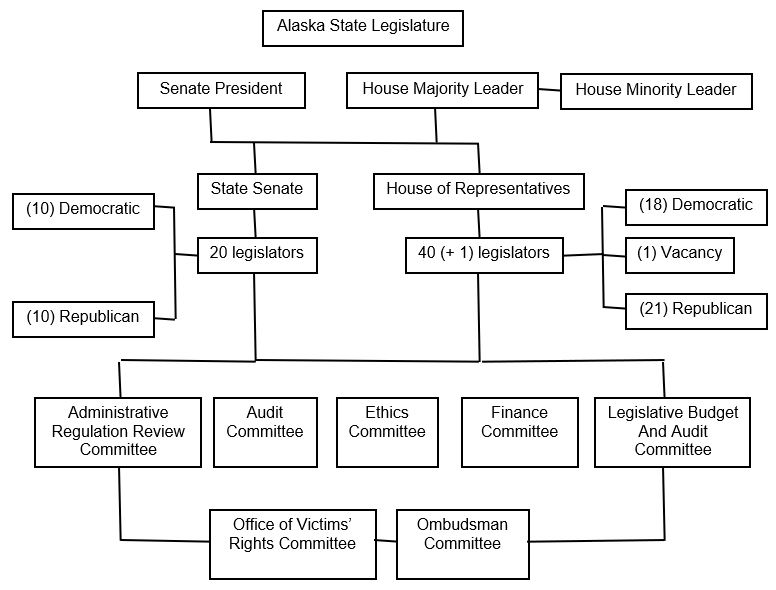The figure below shows the structure of the Alaska State Legislature and the committees operating within it.

The Alaska State Bicameral is the smallest legislative system in all of the states of America. This is based primarily on factors such as geographic size of the state and its small population. The legislators assume a session held at the State Capitol in Juneau every January 19th and ends every April 18th of the year. Unlike other bicameral system, the Alaskan legislature does not hold sessions all throughout the year because Article II of the Alaskan Constitution stipulates to amend the session into 90 days only. This is to give way for the legislators to continue their outside employment although they are still given salary and allowances. However, legislators are still given their salaries and allowances amounting to $50,400 for a normal legislator and $50,900 for the Senate President.
In a decision making process, for example, any legislator coming from either the Senate or House of Representative may propose a House Bill which is subject to hearings. The proponents shall deliver the contents of the proposal through a privilege speech. The legislature shall now decide of whether or not to pass the said bill. Each proposal shall undergo the first reading, second reading, and the final reading. The first reading shall indicate the title of the bill. The second reading is critical because all of the contents of the bill will be discussed and the floor will be open for debate in case the proposal is in need for change or amendment. The final reading is when the legislators will vote to be able to enact the bill. Majority of the Senate and two-thirds vote from the House of Representatives shall be garnered for the bill to be passed. In case of objection or resistance of any member of the legislature to pass the bill to become a law, both the Senate and the House of Representative will review the proposal. After which, the bill will be directed to the Office of the Governor wherein the highest ranking official of the state will have to exercise his veto power. Any decision coming from the veto power is irrevocable.
The legislature is also the one who approves the budget for every fiscal year. The Governor may submit his budget proposal for the legislature to review. The Legislative Budget and Audit Committee is the one in charge of reviewing facts and figures which will be presented as the legislature convenes session each year.
References
Andresanu, Razvan, Noslacan, Radu, Vigdorovits, Sonia, and Vincz, Balazs. Bicameralism vs. Unicameralism in a lawful state. Juridic Magazine. N.d. Web.
Tsebelis, George and Money, Jeanette. Bicameralism. Cambridge University Press. 1997.
